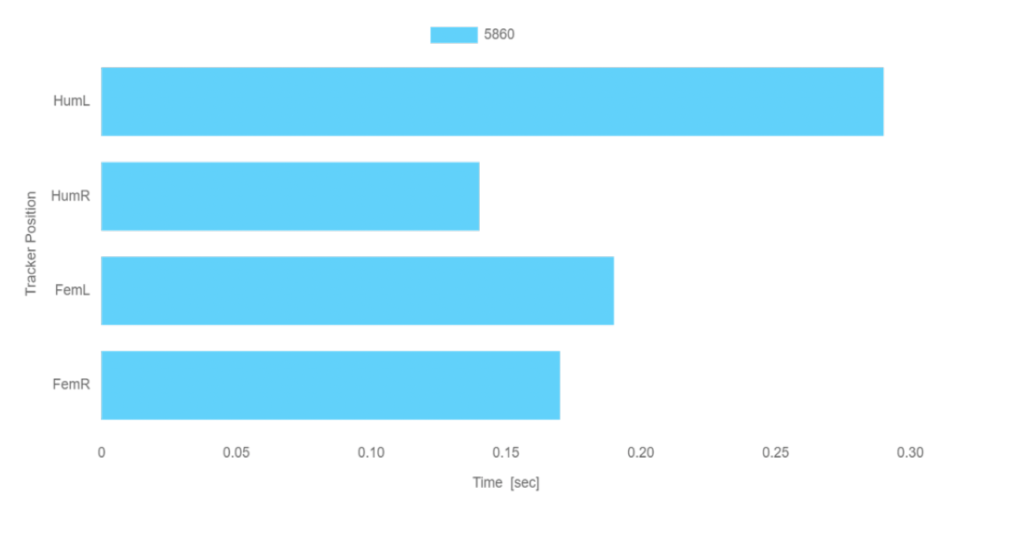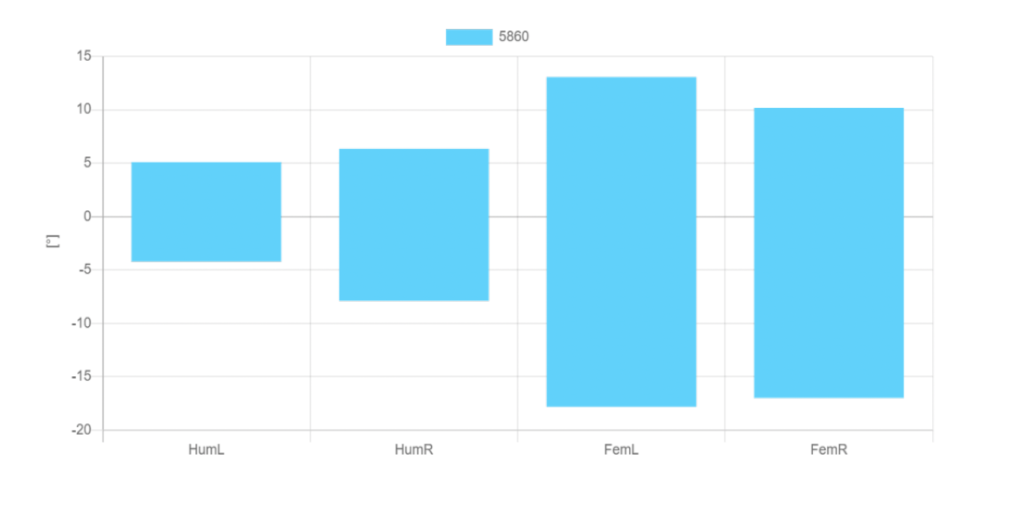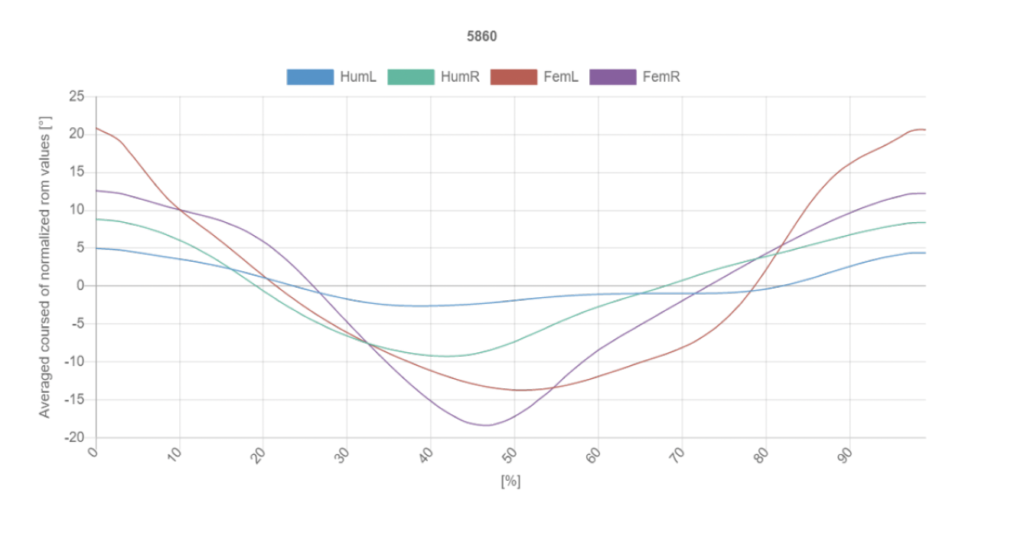Puppy, 9+ weeks old, supporting leg irregularity of the front-right limb since one week.
This real-life case is presented by the World Veterinary Organisation for Kinematically Controlled Orthopaedics, Neurology and Rehabilitation. It´s founder and chairman of the board is Dr. med. vet. Patrick Blättler Monnier.
Initial problem
The little puppy moved in with the family only a week ago. Shortly before that, she had come from a breeder in the north. She was intended as a bitch for breeding.
The day after, Sammy started to limp. The owner made an appointment for an orthopaedic puppy consultation with us.

The supporting leg irregularity in the front on the right is clearly visible. The toe axis there is turned outwards, there is toe widening. There is also swelling of the forefoot joint. The axis of the right shoulder phalanx seems to be turned obliquely inwards, moreover, two toes are almost dropped on one line. The narrow position of the shoulder limbs is striking, as is the drawn up back and the very steep position of the hindquarters.
Orthopaedic functional examination
In addition to the angulated toe axis and the swelling in the forefoot joint, it is particularly noticeable that the extension of the right shoulder is clearly reduced. The puppy reacted with defensiveness to the examination. The left shoulder could be moved normally. A verdigris fracture cannot be excluded.
Therefore, an X-ray of the paw is taken and a kinematic examination is carried out as part of the LupoMove® Puppy programme.
X-Ray diagnostics
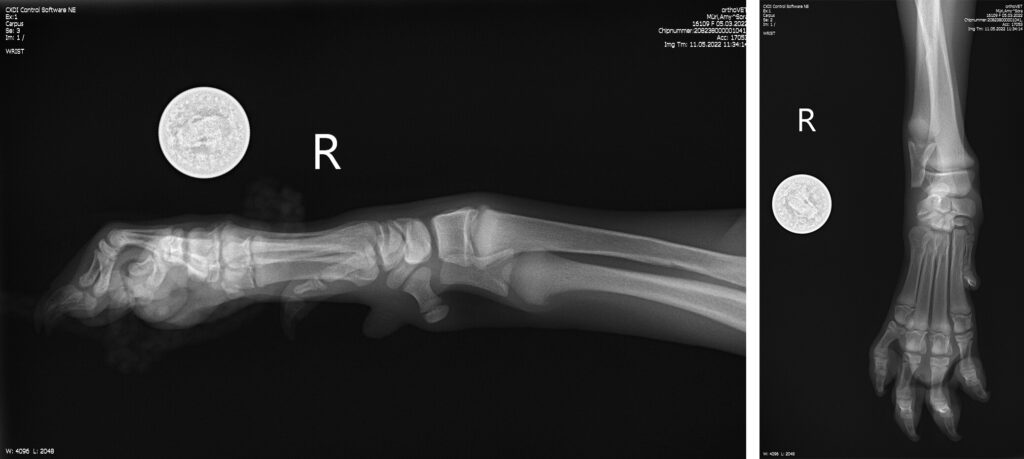
Both x-rays of the paw showed no abnormalities. A fracture could be ruled out and no other structural changes were found.
Kinematics
It is remarkable that the stance phase of the front-left leg is 0.29 sec and of the front-right 0.14 sec. The difference is 100%.
The difference in extension/flexion between right and left was also considerable, caused by the unloading posture of the right limb and the overloading of the left.
The flat “average step” curve of the left limb compared to the values of the other limbs, also a result of overloading, is also striking.
After the diagnosis, the tarsal joint and the rotation axis were treated orthopaedically-manually and then measured kinematically. The direct difference can be seen in the light blue results before treatment compared to the dark blue results afterwards.
The kinematic mobility of the shoulder was partially restored, but not to the desired extent.
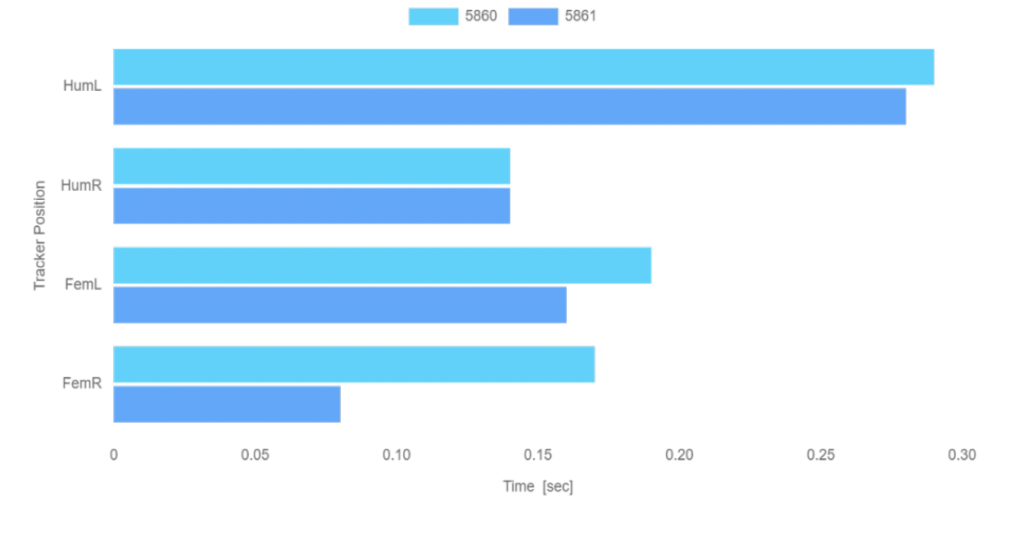
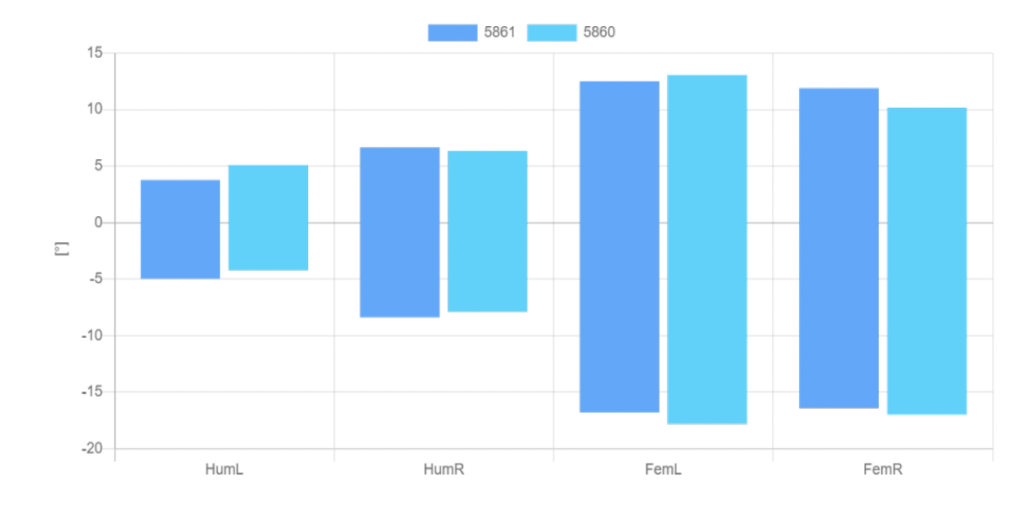
Therefore, the findings from the video analysis came into play and were included in the treatment.
In the second orthopaedic-manual treatment, the left shoulder limb was treated manually, as well as the hindquarters, i.e. the pelvis and both hind legs. Again, a kinematic control was carried out.
This time, the result was satisfactory.
The values of the third measurement are highlighted in purple. It shows that the stance phase at the front right has clearly increased. It increased from 0.14 sec to 0.26, on the left side it is only slightly higher at 0.28. The puppy’s gait is almost symmetrical again. The extension/flexion also normalised, the average ROM evened out. This can be seen well in the development of the “average step” curve of the left shoulder limb.
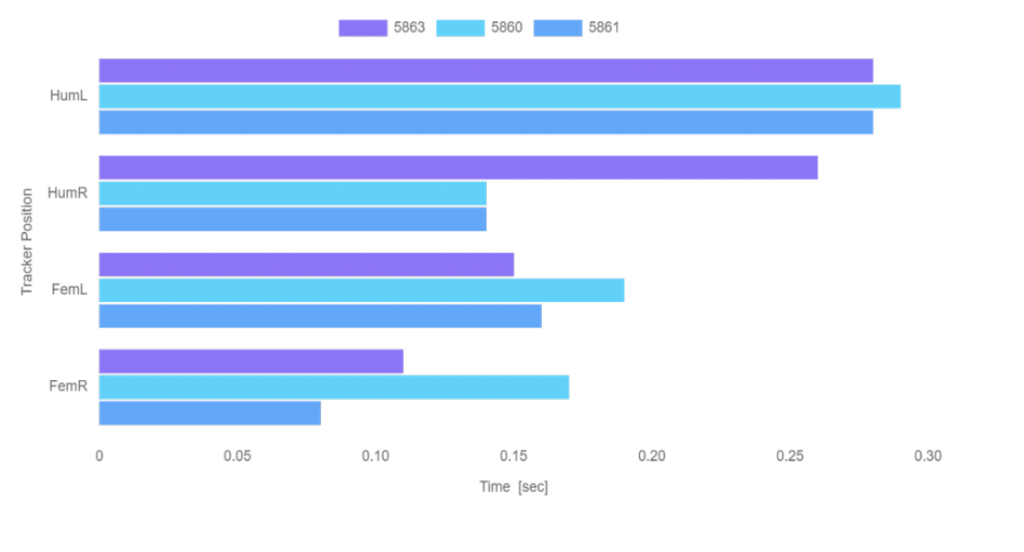
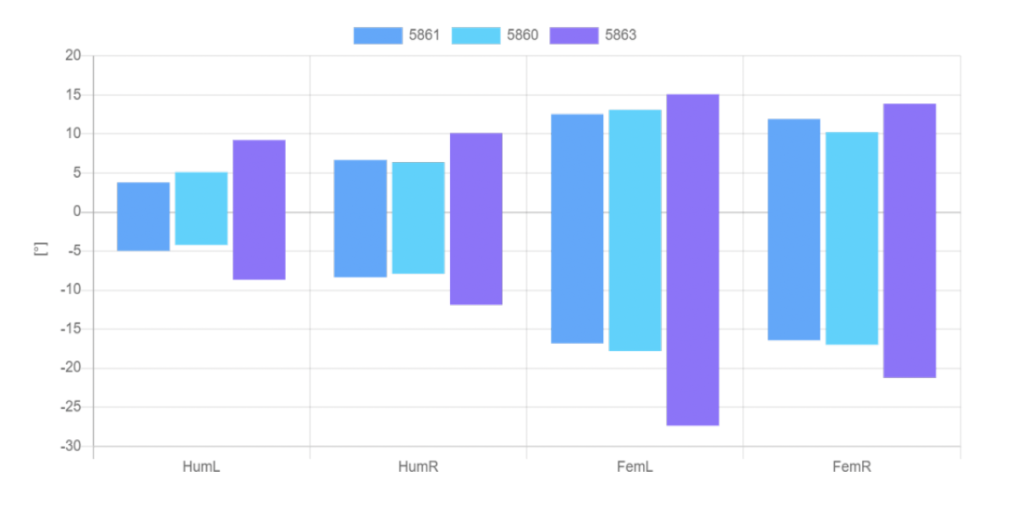
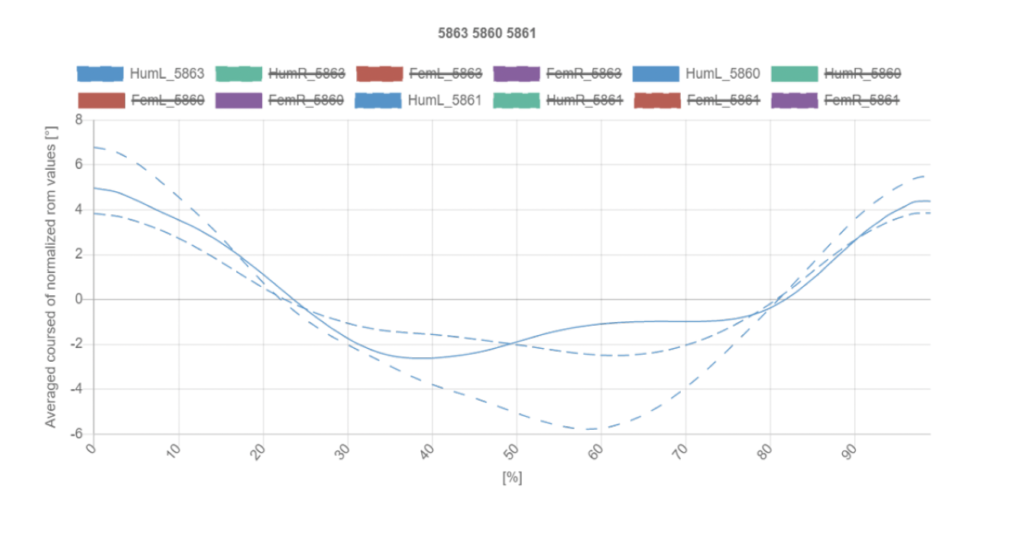
Conclusion
The acute appearing limp of the right shoulder limb was directly related to the left shoulder limb as well as the hindquarters. Both changes are semi-acute and could not have been distinguished without the kinematic examination.
The limp, which could have been interpreted as a consequence of the malloading and overloading of the right shoulder limb, is only part of the problem. Not only the right shoulder limb, but also an orthopaedic malposition in the pelvis and the left shoulder limb affected the puppy’s gait.
Without the kinematic treatment and LupoGait® the examination would not have been so efficient; this is precisely the advantage of the orthopaedic-kinematically controlled puppy consultation.
What could have happened – The imprinting and conditioning of altered movement and pain processes in the puppy.
This patient came to us because of a supporting leg irregularity on the right front. Unfortunately, limping is not uncommon at the age of 10 weeks – but without the kinematic, differentiated diagnosis, the puppy’s altered gait pattern, especially the incorrect and overloaded posture, would have remained undetected.
The pain process and the altered movement can quickly be conditioned.
We would like to explain what the consequences would have been without the treatment.
Young dog diseases such as hip and elbow dysplasia, osteochondrosis or panostitis are epigenetic diseases. This means they result from genes that are encoded and expressed by environmental factors. This is where the altered movement of the puppy arose.
The triggering environmental factors that mobilise the genes are not uncommon.
All the more reason to present changes in gait directly to a professional, orthopaedic puppy consultation.
Here we determine these external, triggering environmental factors in order to reduce and minimise them. In this way we strengthen or restore the health of the puppies.
However, there are other points that need to be taken into account in such gait changes. These are above all
- Conditioning of the altered gait with consequences for the orthopaedics
- Imprinting of the pain process and thus the behaviour.
The second point in particular is very important, because it must be assumed that the psycho-social part of the imprinting in the puppy can be strongly and potentially negatively influenced. Pain is a stressor in the puppy; in our opinion one of the most powerful, often severely affecting behaviour, but also general health.
From a behavioural perspective, pain can make it difficult to interact positively with other dogs and puppies, as well as with the owner or strangers. The main behavioural modalities are fear and aggression, but restraint to apathy and lassitude can also result. A puppy loses his open and fun way of exploring and investigating. He is less carefree. He can withdraw, seem reserved.
The stressor “pain” also has an influence on general health, resistance and the immune system. Stressed dogs, and those in pain, fall ill significantly faster. Parasitoses occur more often.
A good example is Giardia: these bacteria are only facultatively pathogenic. Healthy puppies do not get sick from them. Stressed dogs often have prolonged diarrhoea and are more often resistant to therapy.
The last point we would like to make is about cognitive learning. A puppy in pain is generally slower to learn and less likely to pick up new activities.
The puppy may also be generally withdrawn, or the dog may react with behaviour similar to stimulus overload. These psycho-social behaviours should always be investigated for pain as a cause. These behaviours strongly influence the imprinting, conditioning and learning curve of the puppy and young dog.
Unwanted imprinting of movement
The altered gait pattern also has a strong influence on general movement, balancing and therefore also on statics and dynamics, in other words: the biology of orthopaedics.
Movement is first controlled and regulated in the periphery at the bone, joint and musculature. This is where we find the muscle and joint receptors. The information generated there is passed on centrally via the spinal cord and brain stem. This data is processed in the midbrain and cerebellum before it is transported to the cerebrum. Here, the movement is consciously coordinated and responded to. This information is then passed back to the periphery via the data highway and results in action.
If we show such disturbances in the puppy in the 10th week of life without treating them purposefully, we lay the foundation for gait and movement abnormalities as well as pain. Neither vets nor dog owners are sufficiently aware of this fact. Only with movement diagnostics, in particular with LupoGait®, can these pathologies be detected.In order to counteract these pathologies, a professional, ortho-kinematic puppy consultation, such as within the framework of LupoMove® Puppy, is the only variant to treat disorders at an early stage and to prevent the consequential damages shown.
Watch Sammy’s case as a video:

